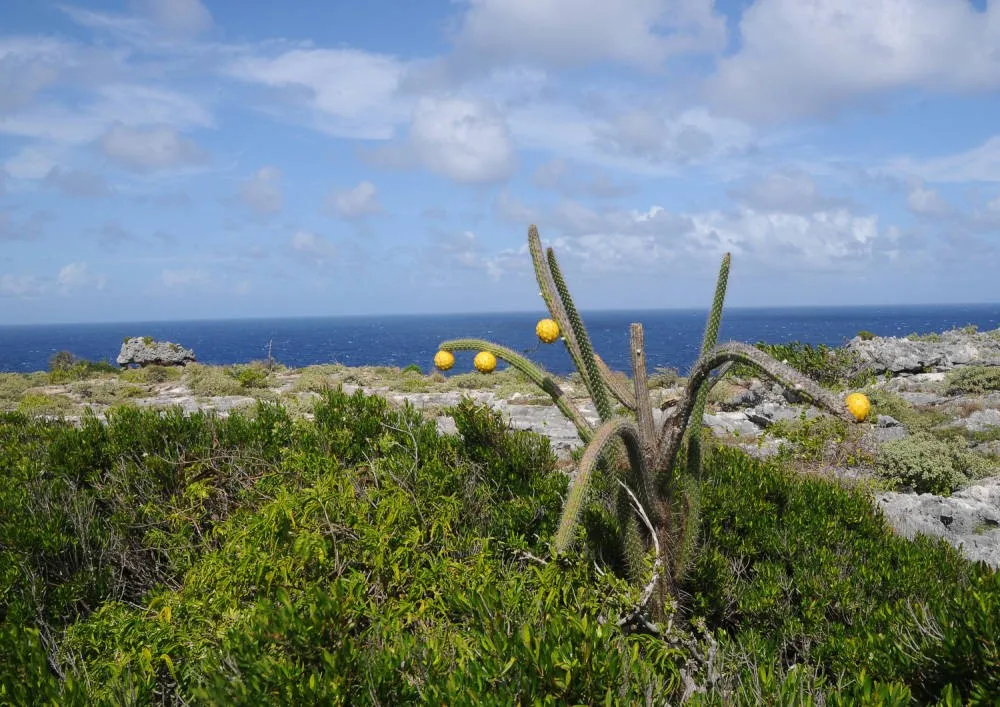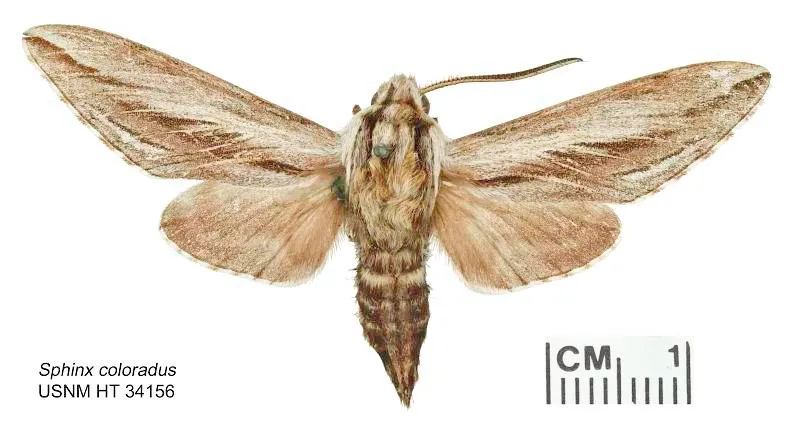NATIONAL MUSEUM OF NATURAL HISTORY
Why Hawk Moths are the Underdogs of the Pollinator World
Hawk moths are the underdog pollinators that sustain countless populations of plants around the world.
:focal(200x133:201x134)/https://tf-cmsv2-smithsonianmag-media.s3.amazonaws.com/blogging/featured/Brown_and_pink_moth..jpg)
Bees and butterflies are famous pollinators, but there’s another insect who deserves its share of the spotlight this Pollinator Week.
Hawk moths are known for their ability to travel incredible distances and for their extremely long proboscises — straw-like tongues from which they guzzle nectar. When a hawk moth drinks from a flower, its proboscis picks up pollen. That pollen can then be spread to flowers farther than 18 miles away as the moth travels along its feeding route.
At the Smithsonian’s National Museum of Natural History, there are over 25,000 specimens of hawk moths which are closely related to butterflies. By using the museum's huge Lepidoptera collection, entomologists can learn about how this underdog pollinator sustains countless populations of plants around the world.
Species that evolve together stay together
Hawk moths don’t pollinate food crops, making them less popular than insects that help the farming industry. But, the moths are vital for the survival of many native plants. Without hawk moths, these plants will disappear, permanently changing diverse and unique habitats.
Some plants and hawkmoths evolved to prefer each other. According to Dr. Robert Robbins, the Smithsonian’s curator of Lepidoptera, plants with long flowers favor hawk moths with similarly long tongue-like proboscises.
It’s a win-win relationship. These moth species win because moths with shorter proboscises can’t access the flowers’ nectar, said Robbins. Meanwhile, the plant wins because its pollinators are likely to visit the same kinds of plants when they make their next feeding stops. The relationship increases the plant’s chances of successful pollination.
Many plants that hawk moths feed on are endangered. They suffer from deforestation and tourism. For example, the red-flowering Puerto Rican higo chumbo cactus lives on three small islands off the coast of Puerto Rico. To survive, it needs pollinators that can fly across the ocean. Because they’re sturdy and large, hawk moths can fly long distances and across island chains, making them perfect for the higo chumbo cactus. The moths also pollinate the spiky Egger’s century plant, an imperiled species of agave that survives in small, scattered populations on St. Croix of the Virgin Islands.

“The populations of these plants are getting more fragmented,” said Dr. Gordon Smith, an entomologist at the University of California, Riverside. “If the moths continue to focus on certain plants, they can actually maintain connections between these very fragmented populations.” Smith plans to use the museum’s collection for his research on the moth’s flight paths.
A pollen-nation in the museum
By studying pollen stored on hawk moths’ proboscises, scientists can create a snapshot of where each moth has been. They can potentially use this pollen data to chart how native, endangered plant populations have decreased overtime.
“We can take these hawk moth specimens from the 1900s and see what plants they were visiting in their communities when they were alive and around,” said Smith.
The Smithsonian’s National Museum of Natural History has the second largest hawk moth collection in the world. The collection contains moths from as far back as 1895, allowing entomologists and botanists to study the relationship between insect and plant in different decades. In fact, the museum has several specimens out currently on loans for scientific research.
“Each individual insect is a data point. When people study the specimens, they unlock this dark data,” said Jessica Bird, the collections information manager for the Entomology department at the museum. “When you collect any type of specimen, especially entomology specimens, you can track diversity and population dynamics over time.”

Species under pressure
Like all pollinators, hawk moths are threatened by climate change, invasive species and pesticides. Once a species is extinct, its co-dependent plants will likely disappear too. For example, entomologists suspect the highly elusive Fabulous Green Sphinx Moth of Kaua'i, Hawaii is gone, leaving the critically endangered vulcan palm with no natural pollinators. Today, the beautiful cliff-crawling plant has all but disappeared from the Hawaiian wild. It lives on as an ornamental house plant, but will likely never be spotted by nature enthusiasts again.
Although hawk moths have been harmed by human interference, they are still more resilient than fragile crop-pollinating insects like European honeybees. Their ability to fly long and hard, as well as their lengthy proboscises, makes them crucial for many at-risk plants’ survival.
“Hawk moths tend to move pollen farther than bees or birds. That helps plant populations remain viable in the face of habitat degradation,” said Dr. Robert Raguso, a biologist at Cornell University and one of Smith’s collaborators.
The pollinators are a safeguard for many habitats. Without hawk moths to visit native, endangered plants, we will no longer see rare and beautiful flowers in the wild. Even worse, ecosystem diversity could decline.
Pollinator Week ends in a few days, but the humble hawk moths deserve our appreciation year-round. It’s time they get their share of the limelight.
Related stories:
How to Press Plants from Your Backyard
Notorious Asian Giant Hornet Finds Home in Smithsonian
Five Species to Wrap Up Invasive Species Week
Digitization Allows Public Access to Smithsonian’s Hidden Collections
Together, We Can Save the Mangroves

